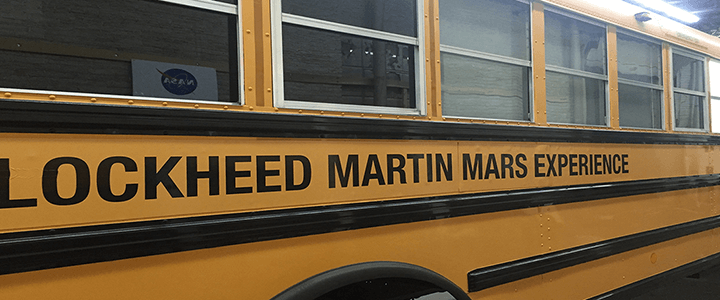A young propulsion engineer has the choice of working for the government or SpaceX. One makes the best missile defense systems in the world, but the other reuses rockets and lands them with spectacular flourish on barges in the middle of the ocean. One wins wars, but the other wants to colonize Mars. Who would you choose?
Meanwhile, a computer scientist graduates with honors and can work for the government or Google. One makes battleships; the other has massage rooms, dogs in the office, and everyone in the world will use and celebrate your software. Again, for the twenty-something ready to change the world, there is a strong incentive to choose the latter.
The science, technology, engineering, and math (STEM) jobs of tomorrow are as plentiful and challenging as ever before, and the talent pool eligible for those jobs is both too small and choosing young companies over the blue chips. To counter this long-term threat, defense contractors are aggressively pitching STEM to a younger audience. As reported recently in the Los Angeles Times, contractors are “recognizing the challenge they have building awareness with a generation that never had a real space race, but grew up with Google, Snapchat and Apple as part of their daily lives.”
Supply, STEM and Silicon Valley
Defense contractors really do have a shot at winning the talent over. What about when there is no talent to lure? There is an ongoing debate about the supply of tech expertise in the United States. Are we suffering a shortage of qualified workers, or is the shortage overblown so as to bring in less expensive foreign labor? For the defense industry, it doesn’t matter. Non-U.S. citizens are ineligible for a security clearance, removing 37% of Silicon Valley tech workers from the equation. The entrenched defense sector must not only convince new graduates of the industry’s coolness, but in some cases, it has to create those graduates in the first place.
Lockheed Martin, for one, has launched a project called Generation Beyond, centered around its Mars exploration efforts. The company is responsible for the Orion capsule, the first human-rated spacecraft since the Apollo program that is capable of keeping astronauts alive in deep space. Orion will take America back to the moon, and will be part of a larger module that takes us to Mars. Generation Beyond is an especially cutting edge outreach effort in that it is aimed not at university undergraduates or high school seniors, but at grade school children. The company realizes that to build the tech labor force of tomorrow, it is not enough to sell itself or its astonishing hardware, but rather, it has to sell all of STEM itself.
Fanuel Muindi is co-founder of the STEM Education Advocacy Group, a science advocacy think tank in Boston. He tells ClearanceJobs that the defense industry still has a long way to go. “More work is needed in terms of ensuring there is specific funding allocated to develop and support new innovative outreach programs,” he says.
The State of STEM
Change the Equation, a STEM-promoting coalition of businesses, offers a dizzying array of statistics on the state of the field and the students who would be a part of it. The percentage of computer-related college graduates has risen 6% since 2001, and the number of graduates of the various engineering disciplines has gone up by 11%. Computer science credentials have increased 54% since 2009, a credential being defined as “post-secondary certificates through doctoral degrees.” (Many companies cover the cost of training for these sorts of certifications as part of professional development training.)
There is much work to be done, however, if the STEM chasm is to be crossed. Girls score higher than boys in science around the world—except in the United States. Among girls in grades 7-12, 45% believe “boys are more likely to succeed in learning computer science.” Meanwhile, lower-income students are less likely to have access to computer science courses or science lab equipment than their higher-income counterparts. The same goes for black and Latino eighth graders versus white students. If you live in a small town or rural community, you’re less likely to have access to computer science courses than those students in cities. For the overall student population, 56% of 12th graders have never had access to a computer science class.
Clearly, U.S. government and industry will have no choice but to double their efforts if we wish to remain dominant militarily and culturally in the 21st century; neither rockets nor smartphones design themselves, after all. It takes a lot of resources to get the attention of young students who might be brought into STEM. Teachers, scientists, engineers, and advocates draw on their passion when advocating for the field, but it’s a huge problem and effective outreach is a costly endeavor. “The challenge is in finding funding that is targeted for outreach that academic and non-academic organizations can apply for,” says Muindi. “There are simply not enough funding opportunities thus preventing more scientists and others in doing outreach and more. Science outreach should be given a boost.”
SpaceX and Lockheed Martin can fight it out for the brightest minds in STEM, but in order for them to do that, those minds have to find STEM in the first place.




